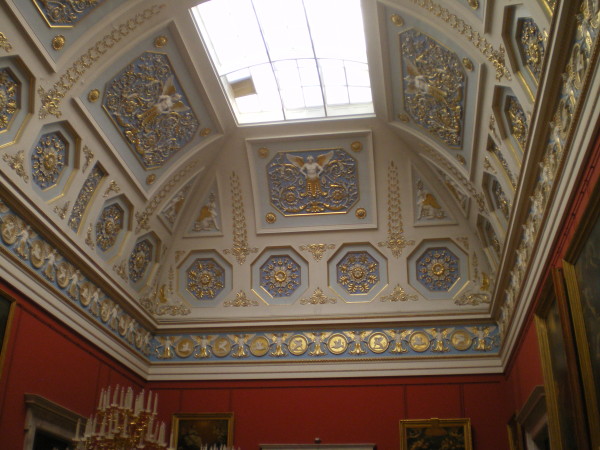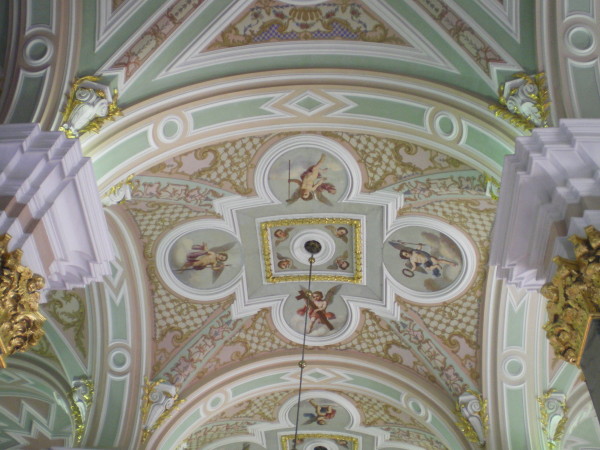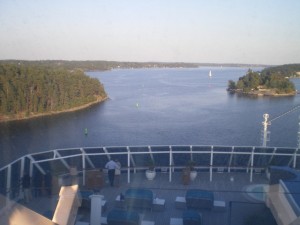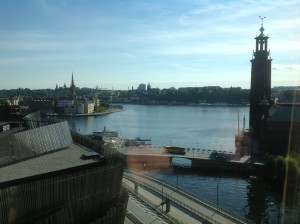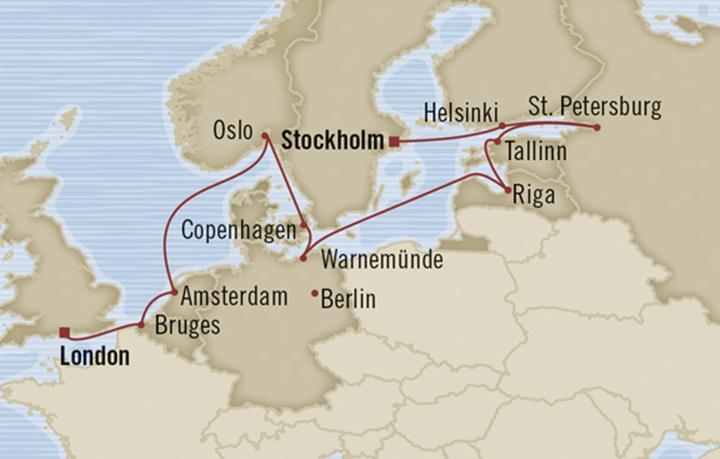If I were to ask you, right now, what your image of Moscow, Russia was, what images would appear in your mind? How would you describe it?
The knock on the door at 4:30 in the morning was Room Service with our breakfast. Oh, that’s early. We had to be ready to go at our meeting place by 5:30. Even the immigration officials were tired, and barely glanced at our passports, already opened to the stamped pages, as we passed through and were assigned to a bus. Our guide, Catherine, was giving us instructions along the way to the central train station in the center of St. Petersburg. Group 15, Car 8, Seats 3 to 38, depart at 7:30 —– and we’re supposed to remember all this? You bet! And the biggest number was 4 – the number of hours on this high speed express train to Moscow.
The train had been in service for two years. We topped out at close to 230 KM/hour, or about 140 mph. The train was very clean, the ride was extremely smooth, the personnel were cordial, and the seats were reasonably comfortable. The water closets (toilets) were very nice. They had movies and music, but we didn’t take advantage of either as we were either watching the scenery or trying to fall asleep. The train is relatively new. In the old days, it could take up to two weeks by carriage, and now they are down to 4 hours. It was said that the czars kept saying no to the trains, but, finally, one of them took a pencil to a map and drew essentially a straight line from St Petersburg to Moscow, and said, build it. There was a lot of nothing but swamp land, trees, fields, and small klatches of huts/small homes and what looked like heated storage units, but we couldn’t figure those out.
We were introduced to our Moscow guide, Marina, on the other end, and together, Catherine and Marina led us to the awaiting bus. Moscow is the capital and largest city of Russia, with 12 million residents, and the Neva River passes through it. Marina’s English was fantastic, and she gave us a very nice bus tour on the way to the “Kremlin Fortress”, which we refer to simply as the Kremlin. On the way, we passed the Lubyanka Headquarters building, under renovation. This was the headquarters for the KGB, now known as the FSB, the Federal Security Bureau. The Kremlin contains several buildings on a campus within the fortress wall, which is functional, but not imposing. Thinking back on it, I don’t remember much of a presence, at all, of police or military – although I’m sure that there were some. President Putin’s office was there, in a two story (above ground) office building, a museum, several churches, and I’m sure much more. Our primary stop was the Kremlin Museum, which contained a very impressive collection of items owned by the Czars and the royal families and diplomatic gifts. There were more than a few Wows in there.
The Russian flag that flies over President Putin’s office flies all the time – whether he is in town or not, so he could have been there – we don’t know.
One must-see of Moscow is the subway system. It is deep underground – for security and because of the swampy soil conditions, but the subway stations are works of art. Each station, I am assuming, based on my sample size of two, is different, but clean and well appointed. We put on our “Moscovian” faces – serious looks, don’t say “you first”, just move, and hopped on the train. We got off at the next station and admired it before riding the very long escalator to the surface. From there, we caught the bus, and it took us back to Red Square, which is not part of, but adjacent to the Kremlin.
Red Square was interesting. Yes, it’s large, and my memories went to the days of the military parades long long ago, with soldiers and military hardware prominent. According to Marina, the “Red” has nothing to do with politics or the color of the Kremlin Fortress brick, but “Red” is translated into “Beautiful”; so Red Square means Beautiful Square. While we were there, they were setting up a large stage for some sort of concert of cultural affair. Lenin’s Tomb sat along the Kremlin Fortress wall, in the center, but not overtly prominent. There were lots of people milling about. Of real interest to me, was an opulent mall – yes, shopping mall, opposite the Kremlin. Gorgeous stores and interior, lots of high end fashion and products – and a customer base that suited the shopping experience.
We were at our meeting place when tower bells began to ring at 4:50, announcing the afternoon Russian Lutheran Orthodox service was going to start at 5pm. Loud and long, but kind of beautiful. We had been flirting with rain showers all day, but we made it back to the bus. The rain started to become more consistent, but we had only a short ride to the Hilton Hotel, where we had dinner – nothing over the top. Mark and Sue Davis, of Boulder, CO joined us and we had a good visit.
Throughout our tour yesterday and today, we kept hearing “Soviet Period”, which we knew ended in 1981. We were curious to know what the current period was described as, and was it considered a good thing. After chatting with both Christina and Marina, we decided on the term “Post-Soviet Period”, which will stand until something happens to cause this period to be called something else. Is it a good period. The old timers, who grew up in the height of the Soviet Period, aren’t totally convinced. The younger crowd is excited about the opportunities available to them, and it’s nothing but good. They all felt comfortable expressing their beliefs.
We bussed to the Central Train Station – there were actually three train stations, one right next to the other – in the center of town, and got on our train, Car 9, seats 1-42, or something like that. We were all exhausted —- except a group of 7 or so from the Dominican Republic. They were loud and obnoxious and inconsiderate – all the way back to St Petersburg. Other than that, all was well. We were bussed back to the ship, and the immigration people barely processed our passports. We were on-board around 1am, and in bed around 2am.
